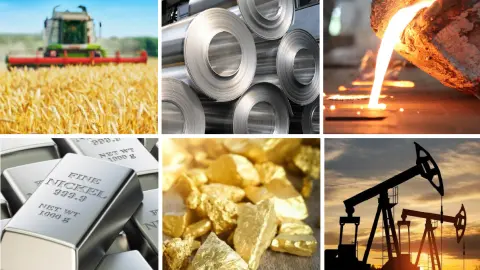Subdued carbon
EU allowances have been trending lower for much of this year. Weaker demand, increased renewables and the front loading of allowances have weighed on the market. Pressure is likely to persist as we enter 2024
EUAs fall on demand pressures
As we have approached year end, EU allowances (EUAs) have traded down to their lowest levels since November 2022, approaching EUR70/t. While the longer-term outlook for EUAs remains constructive as allowances in the market are reduced, short-term dynamics are more bearish. The EU has seen reduced industrial activity, which means lower emissions and the need for installations to surrender fewer allowances. Emissions over the first half of this year totalled 1.76b tonnes CO2eq, down 4.2% year-on-year.
If we look at the power sector, in addition to overall power generation having fallen this year, we have also seen changes in the power mix. Renewables output has been strong, and in France nuclear power output has also recovered, therefore reducing the number of allowances needed. EU electricity generation has been in a YoY decline since March 2022. Meanwhile, generation from coal and natural gas has been under pressure throughout the year.
Looking ahead, this is not expected to change anytime soon. Both forward spark and dark spreads are firmly in negative territory in the coming months, suggesting that power generation from natural gas and coal will remain under pressure through the 2023/24 winter. This all suggests that EUA prices are likely to remain subdued in the short term.
Front loading of allowances
Supply dynamics have also played a role in pressuring EUAs, dimming the short to medium outlook. This is partly due to REPowerEU, which aims to end the EU’s reliance on Russian fossil fuels by diversifying energy sources, energy savings and accelerating the roll-out of renewables. Part of the REPowerEU plan is set to be funded by the Recovery and Resilience Facility (RRF) through the sale of Emissions Trading System (ETS) allowances. The Commission’s aim is to raise EUR20 billion from allowance sales. Some 40% of these funds are set to be met by bringing forward the auction of allowances scheduled to be auctioned between 2027-2030. These will now be brought forward to before 31 August 2026. Meanwhile, the remaining 60% will be met by sales of allowances from the Innovation Fund.
The EEX auction calendar shows an additional 35.3mn allowances are to be auctioned in 2023 for the RRF, whilst auction regulation from the Commission shows 86.7mn allowances to be auctioned in both 2024 and 2025 and 58mn allowances in 2026 for the RRF. This adds up to a total of 266.7mn allowances.
While the short-term outlook remains subdued and the medium-term outlook less bullish than originally envisaged, the longer-term picture remains bullish. Ambitious targets under Fit for 55 mean a more aggressive reduction factor will be used for allowances moving forward. A reduction factor of 4.3% per year will be used between 2024 and 2027 and 4.4% between 2028 and 2030. This compares to a previous linear reduction factor of 2.2%. In doing so, the Commission hopes to see emissions under the ETS fall 62% from 2005 levels by 2030 compared to a 43% reduction target previously. This is also slightly more aggressive than the proposed 61% reduction.
Furthermore, to help hit the target there will be two one-off reductions in the cap, effectively reducing it by 90mn allowances in 2024 and a further 27mn allowances in 2026.
Shipping falls under ETS from 2024
1 January 2024 will also see the shipping sector fall under the EU Emissions Trading System. Although, there have been calls from a number of member states to delay the inclusion of the shipping sector. These countries, including Spain and Italy, have cited concerns that the extra cost faced by shippers could drive traffic away from EU ports and that we could actually see increased emissions with some shippers taking longer routes to avoid stopping in EU ports.
Initially, carbon emissions from all large ships (above 5,000 gross tonnage) entering EU ports and transporting passengers or cargo for commercial purposes will fall under the ETS. There will be a phase-in period where shippers will only have to surrender allowances for 40% of their emissions for 2024, 70% for 2025 and 100% for 2026 emissions. Furthermore, only carbon emissions will be included from 2024, but from 2026, methane and nitrous oxide emissions will also be included.
100% of emissions will be covered for intra-EU trips and those that fall within an EU port, whilst 50% of emissions will be covered for extra-EU voyages that either start or end in an EU port.
The inclusion of the shipping sector in the EU ETS will see 78.4mn allowances added to the ETS, which will be subject to the same reduction rate as the wider ETS. This compares to total ETS-applicable emissions from the maritime industry in 2022 of 83.4mtCO2e.
Phase out of free allowances for the aviation sector
2024 will also start to see free allowances for the aviation sector phased out. Free allowances will be reduced by 25% in 2024 and 50% in 2025 while the industry will have to pay for 100% of their emissions from 2026. Given the difficulty in decarbonising the aviation sector and the continued recovery in air travel, demand for EUAs from the sector will continue to grow in 2024.
This publication has been prepared by ING solely for information purposes irrespective of a particular user's means, financial situation or investment objectives. The information does not constitute investment recommendation, and nor is it investment, legal or tax advice or an offer or solicitation to purchase or sell any financial instrument. Read more
Download
Download article
4 December 2023
Commodities Outlook 2024: Cautious optimism This bundle contains 12 Articles